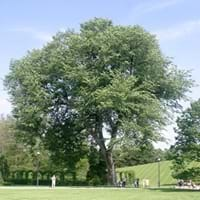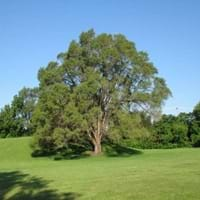Life Span
Perennial
Perennial
Origin
North America
Asia
Types
Water elm
Not Available
Habitat
Floodplains, Hillside, stream banks, Swamps, Upland
Woodland Garden Canopy
USDA Hardiness Zone
3-9
2-9
Sunset Zone
1a, 1b, 2a, 2b, 3a, 3b, 4, 5, 6, 7, 8, 9, 10, 11, 14, 15, 16, 17, 18, 19, 20, 21
A1, A2, A3, 1a, 1b, 2a, 2b, 3a, 3b, 4, 5, 6, 7, 8, 9, 10, 11, 14, 15, 16, 17, 18, 19, 20, 21
Habit
Upright/Erect
Upright/Erect
Minimum Height
Not Available
Minimum Width
Not Available
Flower Color
Green
Not Available
Flower Color Modifier
Bicolor
Bicolor
Fruit Color
Tan
Green, Tan
Leaf Color in Spring
Light Green
Dark Green
Leaf Color in Summer
Dark Green
Dark Green
Leaf Color in Fall
Light Yellow
Dark Green
Leaf Color in Winter
Not Available
Not Available
Leaf Shape
Oblique base
Elliptic
Plant Season
Spring, Summer, Fall, Winter
Summer
Sunlight
Full Sun
Full Sun
Growth Rate
Fast
Very Fast
Type of Soil
Loam
Clay, Loam, Sand
The pH of Soil
Acidic, Neutral
Acidic, Neutral, Alkaline
Soil Drainage
Average
Average
Bloom Time
Early Spring
Spring
Tolerances
Cold climate, Drought, Pollution, Salt
Pollution, Drought
Where to Plant?
Ground
Ground
How to Plant?
Rooted stem cutting, Seedlings, Stem Planting
Seedlings
Plant Maintenance
Low
Medium
Watering Requirements
Average Water Needs, Requires regular watering, Requires watering in the growing season, Water Deeply
Do Not over Water, Needs watering once a week
In Summer
Ample Water
Lots of watering
In Spring
Average Water
Moderate
In Winter
Average Water
Average Water
Soil pH
Acidic, Neutral
Acidic, Neutral, Alkaline
Soil Type
Loam
Clay, Loam, Sand
Soil Drainage Capacity
Average
Average
Sun Exposure
Full Sun
Full Sun
Pruning
Remove dead branches, Remove dead or diseased plant parts, Remove hanging branches
Remove diseased branches by the tool's blades dipped into the alcohol solution
Fertilizers
Fertilize every year, fertilize in growing season, Nitrogen, Phosphorous, Potassium
20-5-10 fertilizer
Pests and Diseases
Bark beetles, Beetles, Borers, Mites, Moth, Red blotch, Scale
Aphids, Leaf spot, Powdery mildew
Plant Tolerance
Cold climate, Drought, Salt
Drought
Flowers
Insignificant
Insignificant
Flower Petal Number
Single
Not Available
Foliage Texture
Medium
Medium
Foliage Sheen
Matte
Matte
Attracts
Not Available
Insects, Not Available
Allergy
allergic reaction, Asthma
Mild Allergen
Aesthetic Uses
Landscape Designing
Bonsai
Beauty Benefits
Not Available
Not Available
Environmental Uses
Absorbs greenhouse gases, Absorbs huge amounts of CO2, Air purification, Food for birds, Forms dense stands, Nesting sites for birds, Prevent Soil Erosion, Shelter for wildlife, Wildlife
Air purification
Medicinal Uses
Antispasmodic, Astringent
Antibilious, Antidote, Demulcent, Diuretic, Febrifuge, Poultice
Part of Plant Used
Bark, Stem, Tree trunks, Wood
Fruits, Inner Bark, Leaves
Other Uses
Used as firewood, Used for woodware, Used in biomass, Used in construction, Used in Furniture, Used in paper industry, Used in pulpwood and lumber production, Wood is used for making furniture, Wood is used for ship building, Wood is used fore making tools, Wood is used in construction, Wood log is used in making fences
Inner bark can be dried and made into noodles, Sauces, Sometimes used for making wine, Used as a potherb, Wood used for boat making
Used As Indoor Plant
No
No
Used As Outdoor Plant
Yes
Yes
Garden Design
Feature Plant, Shade Trees, Street Trees
Shade Trees
Botanical Name
ULMUS americana
ULMUS pumila
Common Name
American Elm
Siberian Elm
In Hindi
अमेरिकी एल्म
Siberian Elm
In German
amerikanische Ulme
Siberian Elm
In French
orme d'Amérique
Siberian Elm
In Spanish
olmo americano
Siberiano Elm
In Greek
American Elm
Σιβηρίας Elm
In Portuguese
olmo americano
Siberian Elm
In Polish
Amerykański wiązu
Siberian Elm
In Latin
Latin ulmo
Siberian Elm
Phylum
Magnoliophyta
Magnoliophyta
Class
Magnoliopsida
Magnoliopsida
Clade
Angiosperms, Eudicots, Rosids
Angiosperms, Eudicots, Rosids
Tribe
Not Available
Not Available
Subfamily
Not Available
Not Available
Number of Species
Not Available
Importance of Elm and Siberian Elm
Want to have the most appropriate plant for your garden? You might want to know the importance of Elm and Siberian Elm. Basically, these two plants vary in many aspects. Compare Elm and Siberian Elm as they differ in many characteristics such as their life, care, benefits, facts, etc. Every gardener must at least have the slightest clue about the plants he wants to plant in his garden. Compare their benefits, which differ in many ways like facts and uses. The medicinal use of Elm is Antispasmodic and Astringent whereas of Siberian Elm is Antibilious, Antidote, Demulcent, Diuretic, Febrifuge and Poultice. Elm has beauty benefits as follows: Not Available while Siberian Elm has beauty benefits as follows: Not Available.
Compare Facts of Elm vs Siberian Elm
How to choose the best garden plant for your garden depending upon its facts? Here garden plant comparison will help you to solve this query. Compare the facts of Elm vs Siberian Elm and know which one to choose. As garden plants have benefits and other uses, allergy is also a major drawback of plants for some people. Allergic reactions of Elm are allergic reaction and Asthma whereas of Siberian Elm have Mild Allergen respectively. Having a fruit bearing plant in your garden can be a plus point of your garden. Elm has no showy fruits and Siberian Elm has no showy fruits. Also Elm is not flowering and Siberian Elm is not flowering . You can compare Elm and Siberian Elm facts and facts of other plants too.





